“The world is full of magic things, patiently waiting for our senses to grow sharper.”
― W.B. Yeats
Last week, life-long friend Mick Condy sent me a video link on murmurations. I was so intrigued, I have put to together a post showing some examples and some of the interesting behavioural aspects around these spellbinding displays. I do not have video displays so have used some excellent examples from others to illustrate this wonder, including the one Mick sent me on Starlings. The next three images are not mine but taken off the internet as examples of the spectacular murmurations.
Image by David Bulmovitch
Image by Benjamin Lure
Image by Alan Delorme
A murmuration is a shape-shifting cloud formed by a huge flock of birds. They are “a dazzling cloud, swirling, pulsating, wildly twisting in pulses of compression and extension. In the next video link by Meg MacDondald of http://www.wildnwbeauty.com, clouds of Dunlin (small waders which look very similar to our Common Sandpipers) flash between brilliant white and darker colours as they swirl in the morning sun over the protected shoreline estuary on Port Susan Bay, Washington.The Dunlin, in its non-breeding plumage, is a drab gray with a brownish head and breast with white underwings which are distinctive in flight. As a flock twists and turns together in flight, white flashes of underwing gleam in the sun. Click on the next orange hyperlink to see the video.
http://www.youtube.com/watch?v=ObDlvBLPxas
Murmurations do not describe migrating or v-formation or thermal stacked flocks of birds but rather the swirling, pulsating type of swarming. This kind of behaviour is also seen in shoals of certain fish such as sardines, anchovies and herring.
The birds I have seen in southern Africa which exhibit murmuration-type behaviour are Collared Pratincoles along the Chobe River, Red-billed Quelea in the Kalagadigadi, Etosha, Kruger Park and Mashatu. I have some images of Quelea and Pratincoles which illustrate the density of the flocks but I do not illustrate their murmurations. Now I am more aware of this phenomenon, I will try to get some video illustrations of our southern African murmurations. The Nikon D4 and D800 have excellent high definition video capability for this purpose.
“It’s not what you look at that matters, it’s what you see.”
― Henry David Thoreau
The next five images were shot in Etosha showing flocks of Red-billed Quelea swarming between waterholes and the adjacent acacia bushes. All the while Gabar Goshawks were attacking them with limited success.
There are so many Quelea flocking around a waterhole in Etosha that they have partially blurred the Elephant and Giraffe in the background.
Red-billed Quelea are seed-eaters, so in late winter, early spring these birds mass on the ground feeding on grass seeds. These birds exhibit the murmuration behaviour beautifully.
Brandon Kiem discusses the Startling Science of a Starling Murmurations. What makes possible the uncanny co-ordination of these murmurations, as starling flocks are so beautifully known? Scientists use tools of high-powered video analysis and computational modeling tools to simulate these phenomenon. When applied to starlings, they revealed patterns known less from biology than cutting-edge physics. Starling flocks are best described with equations of “critical transitions” — systems that are poised to tip, to be almost instantly and completely transformed, like metals becoming magnetized or liquid turning to gas. Each starling in a flock is connected to every other. When a flock turns in unison, it’s a phase transition.
At the individual level, the rules guiding this murmuration behaviour are relatively simple. When a neighbour moves, so do you. Depending on the flock’s size and speed and its members’ flight physiologies, the large-scale pattern changes. What is least known is how criticality is created and maintained. It’s easy for a starling to turn when its neighbour turns — but what physiological mechanisms allow it to happen almost simultaneously in two birds separated by hundreds of feet and hundreds of other birds? That remains to be discovered, and the implications extend beyond birds. Starlings may simply be the most visible and beautiful example of a biological criticality that also seems to operate in proteins and neurons, hinting at universal principles yet to be understood. The next Youtube link shows an excellent example of starling murmurations.
http://www.youtube.com/embed/88UVJpQGi88
Flocks of starlings exhibit a remarkable ability to maintain cohesion as a group in highly uncertain environments and with limited, noisy information. In a scientific paper published in January 2013 titled ‘Starling Flock Networks Manage Uncertainty in Consensus at Low Cost’ by emonstrated that individual starlings within large flocks respond to a fixed number of nearest neighbours, but until now it was not understood why this number is seven. Analysis of the’ uncertainty of consensus’ in empirical data from multiple starling flocks show that the flock interaction networks with six or seven neighbours optimize the trade-off between group cohesion and individual effort, and the optimal number of neighbours does not depend on the number of birds within a flock but rather the shape, notably the thickness, of the flock. This team developed a new systems-theoretic approach for understanding noisy consensus dynamics. The approach allows the evaluation of robustness over a family of hypothesized sensing strategies using observations of the spatial positions of birds within the flock. This approach was used on experimental data from wild starling flocks, and found that six or seven neighbours yield maximal robustness. The implication that robustness of cohesion may have been a factor in the evolution of flocking has significant consequences for evolutionary biology. In addition, the results and the versatility of the approach have implications for uncertainty management in social and technological networks. This makes me think of crowd control and stock market behaviour.
Flocks of birds and schools of fish exhibit striking and robust collective behaviours despite the challenging environments in which they live. These collective behaviours are believed to emerge from simple, local interactions among the individuals. Recent analysis of position and velocity correlations in empirical data collected for large flocks of starlings has shown that each bird responds to a fixed number, seven, of its nearest neighbours. This work suggests that following a topological interaction rule (i.e. interacting with a fixed number of neighbors) provides important robustness benefits for group cohesion compared to a metric rule (i.e. interacting with neighbors within a fixed distance). In addition, work is underway on techniques that can reveal in greater detail the precise nature of the inter-individual interactions. However, these analyses do not yield an explanation for why the starlings interact with seven neighbors, rather than some other number of neighbour.
Well known birding specialist, guide and freelance travel writer, Martin Benadie in an article in Ranger Diaries.com discusses Queleas actively congregating into a large single flock which moves in a coordinated aerial display. The group manoeuvres as a single unit, changing direction instantaneously. The flock which grows to thousands of birds, becomes a living entity with a mind of its own, changing shape and size with each turn. The birds often descend en masse to the edge of the waterhole. The flock so dense at times that the surroundings were hardly visible.
One possible reason for the flocking behaviour could be reduction of the individual birds’ risk of predation, literally swamping would-be predators (a pivotal theory hypothesised by John Lazarus in 1979). As the flock size increases they seem to spend less time being vigilant for predators and more time feeding.The random movements of the bunched up flock could also make it hard for predatory birds to hone in on a single individual.
http://www.bbc.co.uk/nature/life/Red-billed_Quelea#p00381fg
I am off to the Chobe River to photograph birds and wildlife later this month and hopefully I will be able to get better images of murmurations of Collared Pratincoles. These displays more closely resemble the Starling and Wader murmurations than do Queleas which seem to be more localised.
I hope you have found this post interesting. I am constantly in awe and wonder at the multitude of new things to learn about and from nature – a pool of infinite interconnectedness woven together with wisdom and intelligence.
With the scientific reasons aside, it appears as if these birds are celebrating their freedom with utter joy.
“We need mystery. The Creator knew this. Mystery fills us with awe and wonder. They are the foundations of humility, and humility is the foundation of all learning. So we do not seek to unravel this. We honour it by letting it be that way forever.”
The quote of a grandmother explaining The Great Mystery of the universe to her grandson.”
― Richard Wagamese, Indian Horse
Seek to understand nature, marvel at its interconnectedness and then let it be.
Have fun
Mike



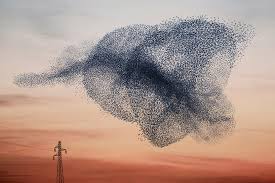


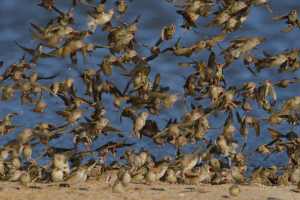


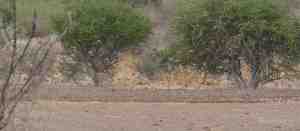
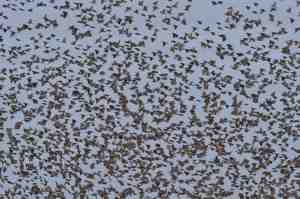

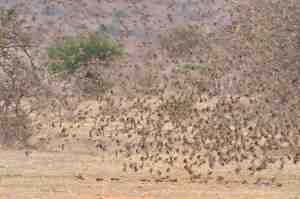

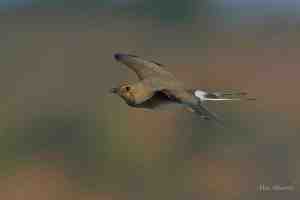



Love the image of the elephants and the flock of birds in Etosha. Great stuff!!!